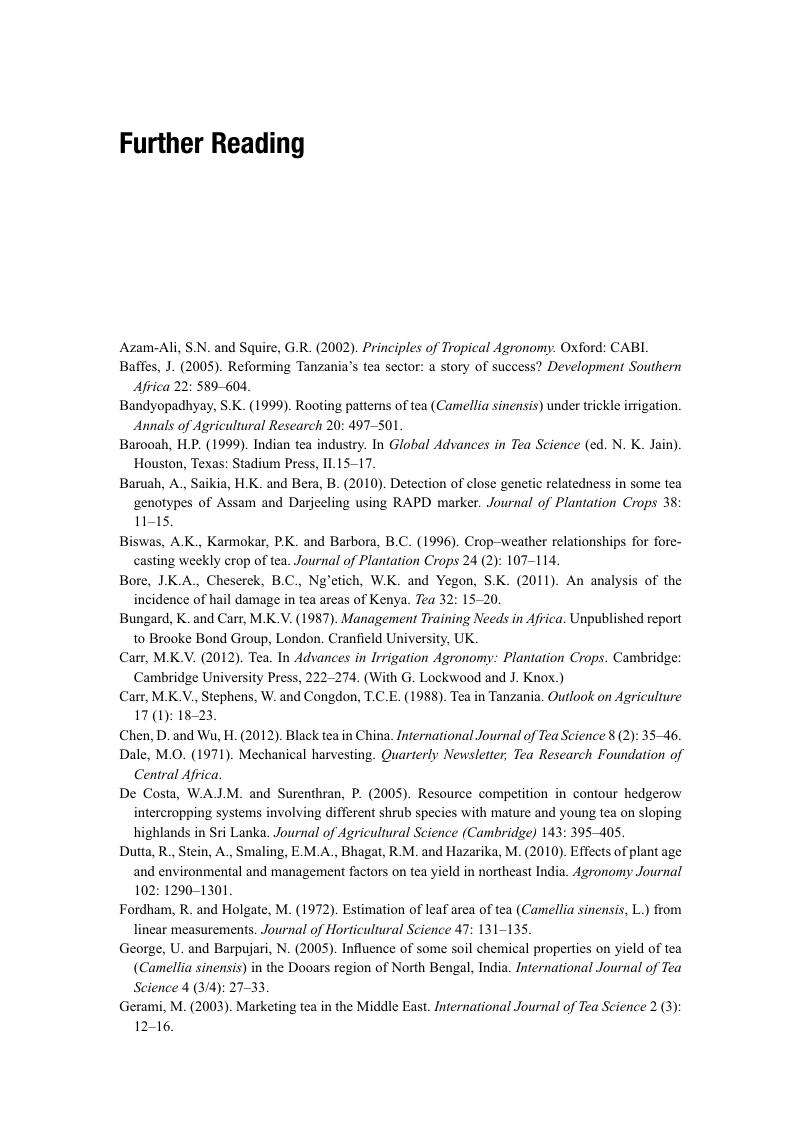Book contents
- Advances in Tea Agronomy
- Advances in Tea Agronomy
- Copyright page
- Dedication
- Contents
- Foreword
- Preface
- Acknowledgements
- 1 Karibuni!
- 2 The World of Tea
- 3 A Changing Climate
- 4 Taxonomic Delight
- 5 The Well-Bred Tea Bush
- 6 Planting and Replanting
- 7 Understanding the Growth Processes
- 8 Roots Exposed
- 9 We Are Only Growing Leaves
- 10 Plucks Shoots, and Leaves1
- 11 Machine-Assisted Harvesting
- 12 Hidden Hunger and Intelligent Guesswork
- 13 Pores for Thought
- 14 More Pores for Thought
- 15 Water Productivity
- 16 A Shady Business
- 17 A Nice Cup of Tea
- 18 Fair Trade?
- 19 The Agronomist’s Report
- 20 Support Services
- Glossary
- References
- Further Reading
- Index
- References
Further Reading
Published online by Cambridge University Press: 15 December 2017
- Advances in Tea Agronomy
- Advances in Tea Agronomy
- Copyright page
- Dedication
- Contents
- Foreword
- Preface
- Acknowledgements
- 1 Karibuni!
- 2 The World of Tea
- 3 A Changing Climate
- 4 Taxonomic Delight
- 5 The Well-Bred Tea Bush
- 6 Planting and Replanting
- 7 Understanding the Growth Processes
- 8 Roots Exposed
- 9 We Are Only Growing Leaves
- 10 Plucks Shoots, and Leaves1
- 11 Machine-Assisted Harvesting
- 12 Hidden Hunger and Intelligent Guesswork
- 13 Pores for Thought
- 14 More Pores for Thought
- 15 Water Productivity
- 16 A Shady Business
- 17 A Nice Cup of Tea
- 18 Fair Trade?
- 19 The Agronomist’s Report
- 20 Support Services
- Glossary
- References
- Further Reading
- Index
- References
Summary

- Type
- Chapter
- Information
- Advances in Tea Agronomy , pp. 439 - 441Publisher: Cambridge University PressPrint publication year: 2018

